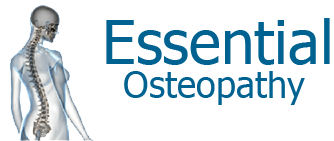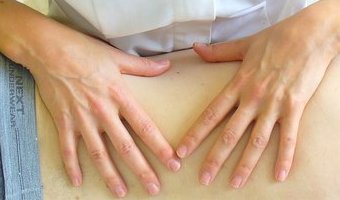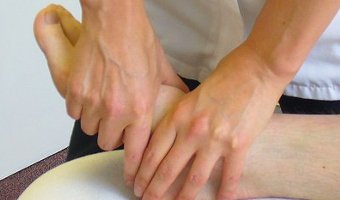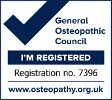Osteoarthritis - Self-care and Osteopathy
Arthritis is a common condition affecting around 10 million people in the UK. Those with the condition often suffer with pain and stiffness of the joint as well as difficulty with performing daily activities. This can cause low mood and a sense of isolation. There are a number of different forms of arthritis, including inflammatory arthritidies such as rheumatoid, psoriatic or reactive arthritis but, in the majority of cases, people who are given the diagnosis of ‘arthritis’ have the condition ‘Osteoarthritis’.

Osteoarthritis is characterised by ‘wear and tear’ in the joint(s) of the body through normal ageing, but it can be accelerated and come on earlier in life through heavy and repetitive overuse of these joints. Factors such as genes, weight and a history of injuries or accidents of the joint(s) can also lead to osteoarthritis. It most often affects hips and knees but spines, hands, wrists and ankles are also frequently problem areas. Wear and tear causes thinning of the discs or cartilage between the joint bony surfaces and subsequent friction. Pain, inflammation and bony deposits (osteophytes) resulting from this causes the surrounding soft tissue to shorten and the person reduces use of the joint. This reduced mobility deprives the joint of adequate lubrication, drainage and nutrition and the muscles around the area can become inhibited and weak.
Although this may sound scary, it doesn’t mean that person is ‘over the hill’ or that they have to put up with it or that the only option to recovery is surgery or long-term strong medication. In fact there are many ways in which people with osteoarthritis can help themselves to lead an active life. Osteopaths can not only treat to ease the symptoms but can develop an action plan that works for you.
Advice to those with Osteoarthritis:
- Osteopathic treatment – NHS guidelines shows that, together with weight loss, pain medication (as appropriate) and exercise, manual therapy (stretching, soft tissue massage and manipulation) such as Osteopathy can improve joint range of movement (both of the affected joint and related joints), relieve pain, promote better blood flow to the joint, increase flexibility and improve quality of life for those with Osteoarthritis.
- Stay active – research shows that gentle encouragement or, even better, strengthening of the muscles around the joint can really help ease the pain and keep the joint mobile. An NCOR (the National Council for Osteopathic Research) report – ‘Exercise therapy in the management of hip and knee osteoarthritis’ – shows that there is strong evidence suggesting that exercise in general can help the pain of hip and knee osteoarthritis. More detail is given on how exercise can be tailored to improve pain levels and mobility in this group (click here)
- Try to avoid exercise or activity which puts a lot of weight through the arthritic joint. For example, swimming or cycling are preferable over running if you have knee or hip arthritis
- Stretching helps to keep the muscles supporting the arthritic joint(s) supple and mobile
- Stay positive – remember that research shows that quite a number of people with arthritis showing on XRays or MRI are completely free of symptoms. You could be one of them!







